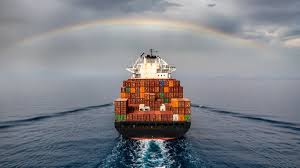Maritime assets underpin Morocco’s funding strategy
Morocco’s blue economy at 3.8% of GDP tightens funding costs as EMB narrows and MAD=X stabilises; port scale and services inflows buffer terms of trade while BZ=F volatility remains the key external variable.

Morocco’s decision to quantify its ocean-linked sectors at 3.8% of GDP and 4.6% of national employment establishes a measurable pillar within national accounts and a clearer investment case for climate-aligned capital. Using calendar-year baselines and constant prices for real measures, the economy expanded by an estimated 3.8% in 2024 with projections near 4.4% in 2025, as non-agricultural activity offsets rainfall volatility. By folding fisheries, aquaculture, ports, coastal tourism, and desalination into a single statistical frame, the state moves from narrative sustainability to auditable production and employment metrics with balance-of-payments relevance.
The policy mechanism is asset monetisation through logistics, services, and resource efficiency. Tanger Med handled 10.24 million TEUs in 2024, placing Morocco among the world’s top container hubs and tightening trade costs for exporters through scale and schedule reliability. Marine protein exports and higher-value processing add hard-currency receipts; aquaculture capacity continues to scale from a low base with double-digit growth rates typical in early cycles.
Desalination projects—phased under the National Water Plan—reduce hydro-climatic risk to agriculture and tourism, smoothing sectoral output profiles. Once measured, these flows can anchor sustainability-linked financing structures with verifiable targets for port turnaround times, coastal habitat restoration, aquaculture yields, and delivered desalinated water, turning physical assets into cash-flow proxies suitable for PPPs and labelled sovereign issuance.
Macro transmission runs through external balances, borrowing costs, and labour absorption. Morocco’s current-account deficit narrowed to about 1.6% of GDP in 2024 and is projected around 2% in 2025–2026 as services, remittances, and manufacturing exports stabilise inflows. International reserves cover roughly five months of goods and services imports, a cushion that supports the managed-float regime and limits pass-through under moderate commodity conditions.
General government debt stood near 69% of GDP in 2024; with the sovereign’s hard-currency risk premium averaging roughly 170–220 basis points over U.S. Treasuries in 2024–2025, credible blue-economy key performance indicators can compress spreads by 25–50 basis points relative to a plain-vanilla curve, lowering the marginal cost of funding and lengthening duration at coupons consistent with debt-stabilising primary balances.
Analytically, the employment channel matters. With blue-economy jobs formally measured at 4.6% of the workforce, targeted coastal SME programmes can lift participation and wages in ports, logistics services, hospitality, and marine processing. Empirical fiscal multipliers for coastal infrastructure in developed benchmarks range from 1.4 to 1.8; Morocco’s open-economy structure implies lower leakages than commodity-importing peers because logistics and service exports recycle foreign currency internally. The FX feedback loop strengthens if port volumes and services trade rise while fuel costs are contained by efficiency gains and gradual decarbonisation; Brent sensitivity remains the main external swing factor, but diversified services receipts can offset part of the import bill when BZ=F trades soft.
Regional and global context reinforce the signal. Among emerging markets, few sovereigns integrate natural-capital accounting directly into debt strategy while running investment-grade-adjacent profiles and deep container capacity. That differentiation is relevant for index-constrained investors with environmental mandates and for cross-over buyers allocating to labelled sovereigns. The policy shift aligns with a broader cycle of spread normalisation across resilient EM credits and a gradual tightening of ESG disclosure standards, where independent audits and time-consistent KPIs are now prerequisites for premium pricing.
Execution risk is non-trivial and must be managed within the macro framework. Data assurance, inter-ministerial coordination, and coastal-zoning enforcement will determine credibility. Climate adaptation is a hard constraint: sea-level and storm-surge risk must be internalised through protective capex, resilient design standards, and insured asset structures. On the fiscal side, transparent performance budgets and accrual-style tracking of natural-capital assets will be necessary to link blue-economy outcomes to debt-management strategy without overstating near-term revenue.
The forward test is explicit and time-anchored. By end-2026, audited blue-economy value added should exceed 4.0% of GDP; by 2027, the current-account gap should track below 2.0% of GDP on sustained services and logistics inflows; across 2025–2026, hard-currency spreads should compress by 25–50 basis points versus the 2024–2025 average if labelled issuance and KPI delivery meet disclosures. Confirmation across these indicators would validate the blue economy as a structural macro anchor rather than a statistical reclassification.





